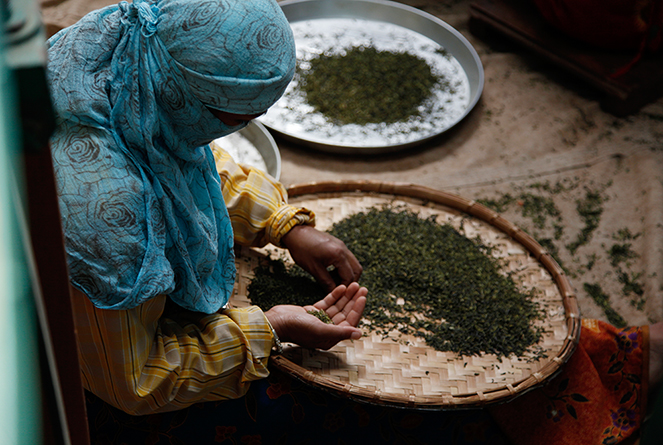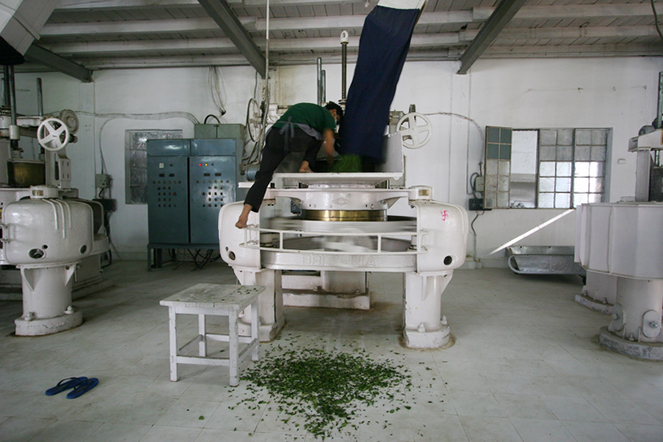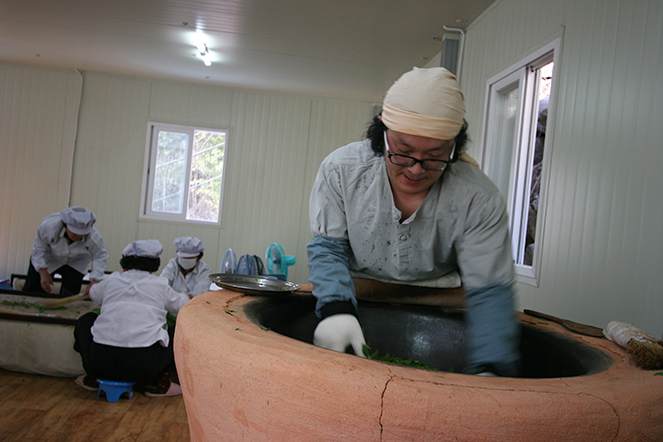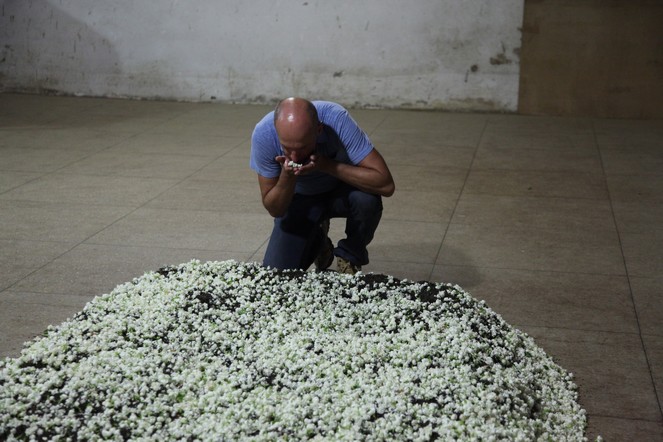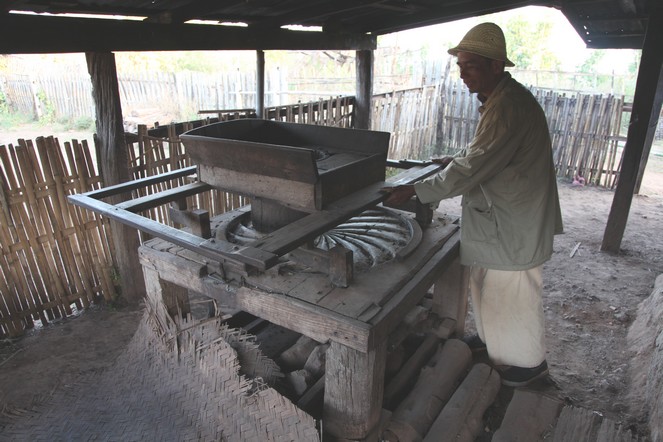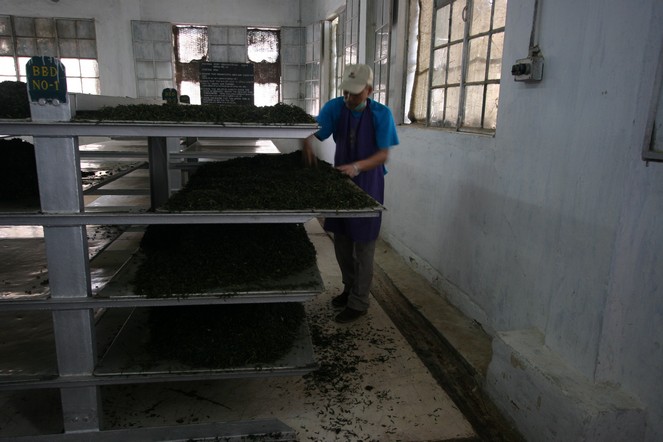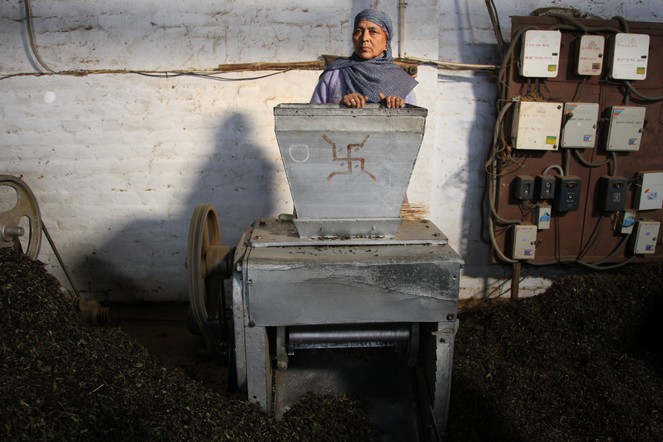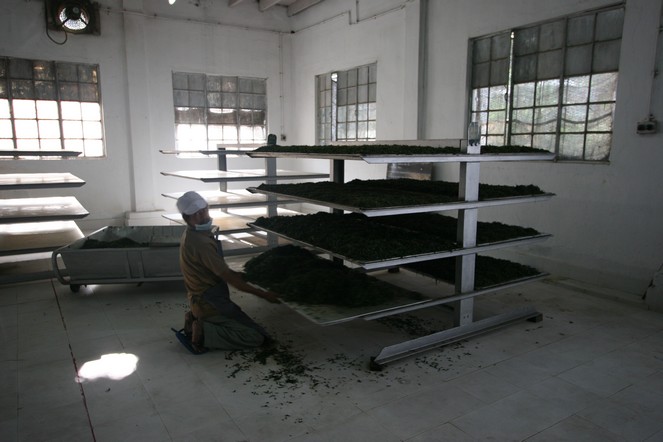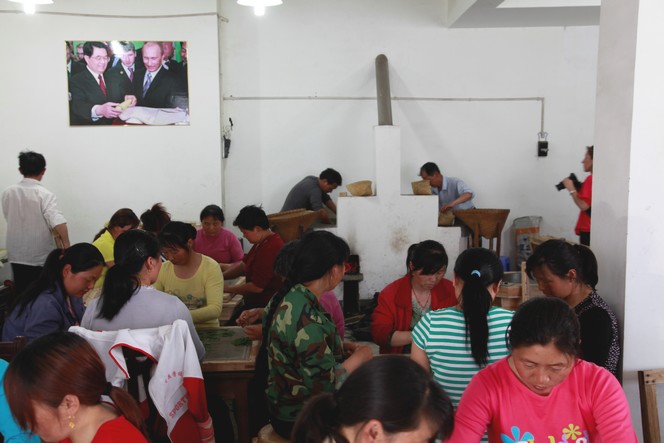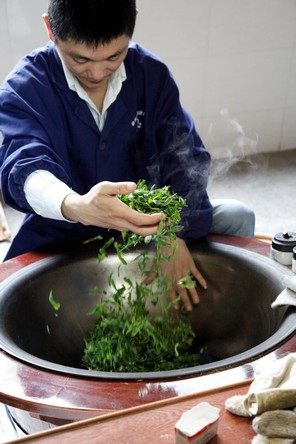It is difficult to imagine what tea processing involves in terms of expertise and refinement. Here, for example, the production process has been completed, and this woman is going through the leaves one by one to remove tiny stems and other imperfections.
Tea processing
Rolling Darjeeling leaves
When you read tasting notes on Darjeeling teas, you learn that the leaf can be more or less rolled, depending on the batch. This is what the rolling looks like. As soon as the leaves have finished wilting, on the upper level of the building, they are dropped (see photo) into this container, which has a press. Rolling, as it is performed in Darjeeling, takes just a few minutes. It prepares the leaves, by lightly crushing them, for the following stage: oxidation.
Jukro, a fine and rare tea from Korea
Jukro from South Korea is one of the finest quality teas in the world. I know just one farmer who produces it. He can only do so in the first days of May, using his best leaves. The quantity obtained is so small that only a few customers are able to enjoy it. I think you can imagine how eagerly I anticipate his new plucking every year. The richness of the tea’s flavours and its complexity and length in the mouth are worth tasting at least once in a lifetime.
Scenting tea with jasmine
Artisanal production
In Myanmar (Burma), the production of tea remains highly artisanal. People make both green and black tea. I haven’t found anything special in my tastings so far, but I’m continuing my research.
Here, in the Hsipaw region, the main tea producing area, villagers take the plucked tea leaves home and process them in front of their houses. This is what the local rolling machines look like. They are worked by hand.
During the oxidation stage, experience is everything
During the oxidation process the tea leaves change colour, from green to brown. This only applies to black teas, of course.
Experience is everything when it comes to knowing when to end this stage. The factory manager must assess the colour of the leaves and their aroma, to decide if the tea has oxidised enough and it is time to dry it.
Green particles in black tea
Sometimes you find green particles in black tea that are not the pale-green buds that often accompany a fine pluck.
The particles I’m talking about here come either from the rolling process, if the leaves get slightly broken, or when leaves that are a bit too big are put through a machine like this one, to make them smaller. Note the serious expression of this worker, who appears to blend in with her machine.
Tea Oxidation
Oxidation is an important stage in the process of making black tea.
It is not very easy to photograph as it consists of spreading out the tea on sheets in a fairly warm and humid atmosphere, then simply waiting for time to pass.
The best Taiping Hou Kui is produced here
Taiping Hou Kui is known as a precious tea among the Chinese, but very few have had the opportunity of tasting it even once in their life.
Here, we are in Hou Kui, in the famous “Village of the Monkeys”, the birthplace of this tea and its most well-known production site. In the main factory of the village, employees work beneath the gaze of the Russian president, who is very fond of this fine Chinese tea and received some as a gift from Hu Jintao. The tea given by the Chinese president to his Russian counterpart was made in this very factory, so you can imagine the pride of all the workers.
If, like Vladimir Putin, you like Taiping Hou Kui, then this is the time to make the most of it. The 2012 plucking is now available.
How to make Long Jing
Long Jing is processed in a large wok. The work requires plenty of dexterity as the tea must be kept moving at all times. The leaves are withered, rolled and dried in a continuous process and in the same recipient, simply by varying the hand movement.
In the cup you will find a note of roast chestnut, which comes from this toasting of the leaves.

